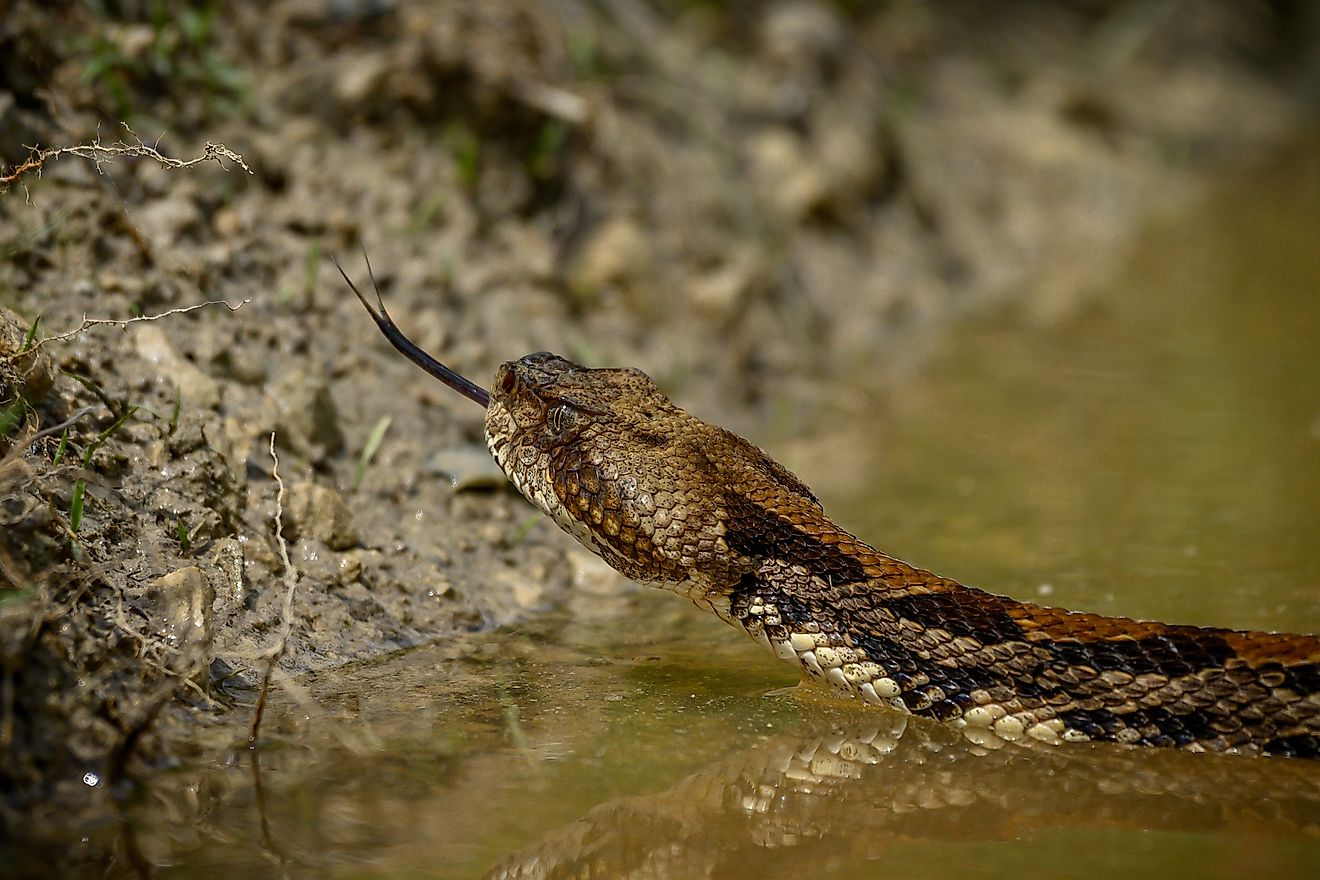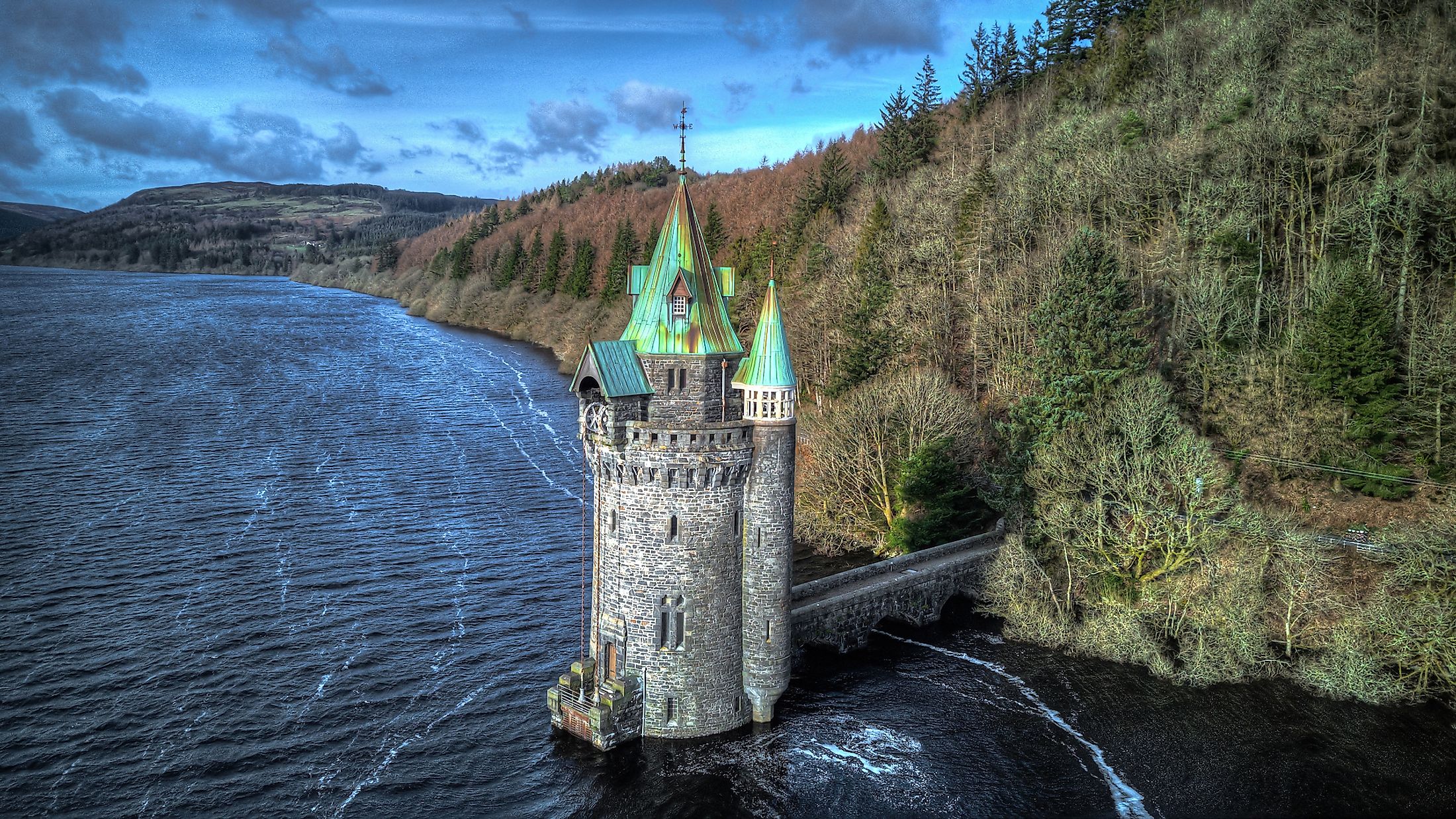
Lake Vyrnwy
Lake Vyrnwy is an artificial reservoir and a critical nature reserve located in Powys, Wales. Although built to supply fresh water to the communities in Liverpool, the reservoir has become an important habitat for wildlife and is now a Natura 2000 site and a Site of Special Scientific Interest. It is surrounded by the Lake Vyrnwy Nature Reserve and Estate. The lake, constructed in the late 19th century, holds almost 60 million cubic meters of water, which is enough to fill 13,000 Olympic swimming pools. The original Welsh village of Llandwddyn was submerged when the artificial lake was built in the 1880s. The village is now located 3.2 kilometers northwest of Lake Vyrnwy.
Location
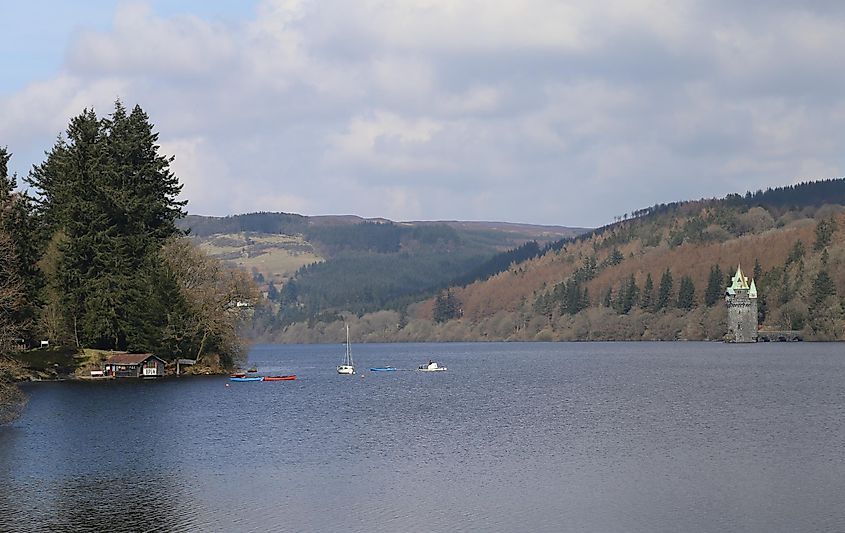
Lake Vyrnwy is one of the most beautiful and important water bodies in the United Kingdom and Europe. The lake is located in northern Powys, one of the eight Preserved Counties of Wales. It sits a few kilometers from the Powys-Gwynedd-Clwyd tripoint in northern Wales and a short drive from Shropshire. Lake Vyrnwy occupies the northeastern edge of the Snowdonia region amidst the beautiful and remote Berwyn Mountains. It is bordered on the south by Lake Bala, a natural freshwater lake in Gwynedd, Wales. Nearby villages include Llandwddyn, Oswestry, and Welshpool
Description
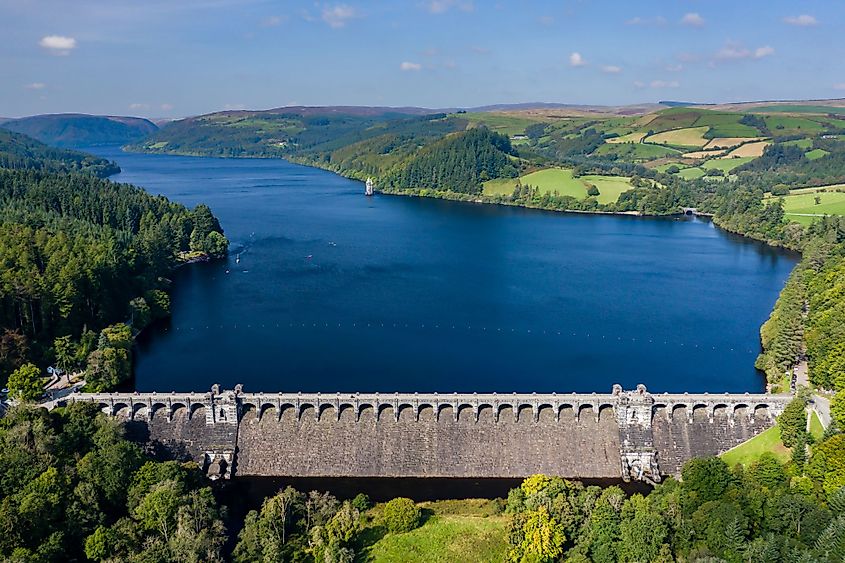
Lake Vyrnwy is the 7th largest reservoir in Wales and England by volume and surface area, but the second-largest artificial lake in Wales by surface area (after Llyn Trawsfynydd) and 4th largest by volume (after Celyn, Brianne, and Brenig). The lake has a maximum length of 7.64 kilometers and a width of 0.8 kilometers. It is 26 meters deep and has a surface area of 4.54 square kilometers and a volume of 59.7 cubic meters. However, the reservoir is 44 meters high from the top of the road bridge to the bottom of the buried foundation. It has a thick base measuring 39 meters. The lake, which has a shoreline of approximately 19 kilometers, resembles a natural lake, with most visitors hardly believing that it is a natural lake. The dam has drainage tunnels at the bottom which can be controlled to allow the River Vyrnwy to flow normally. The reservoir has a road bridge at the top supported by 31 arches and two small towers. The small towers contain the machines operating the valves at the bottom of the lake.
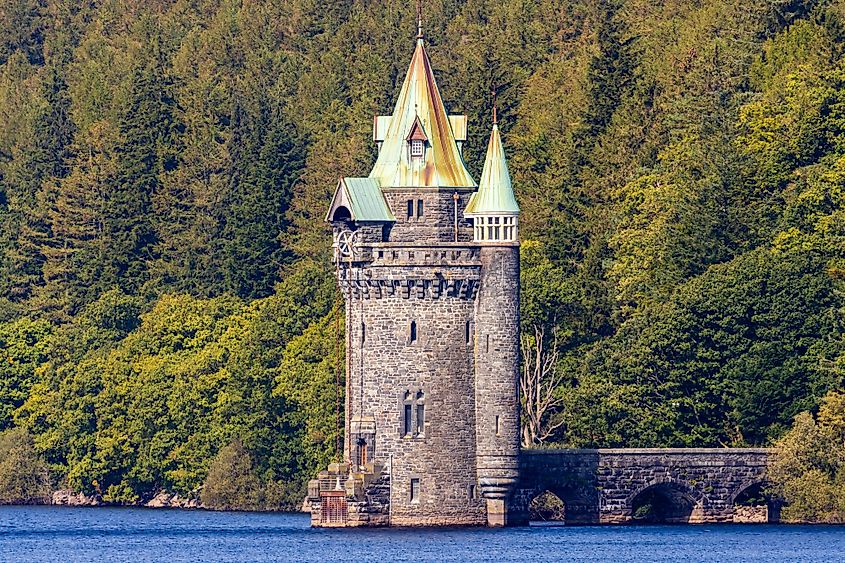
A 47-meter-tall straining tower rises out of the lake’s water approximately 1,200 meters from the dam and 30 meters from the shore. However, about 15 meters of the tower’s height is hidden under the water, and only 32 meters is above water. The tower comprises metal wire mesh that filters the water that leaves the lake through the pipeline and aqueduct to Liverpool, about 113 kilometers away. The tower has a copper-clad roof painted light green.
Geography
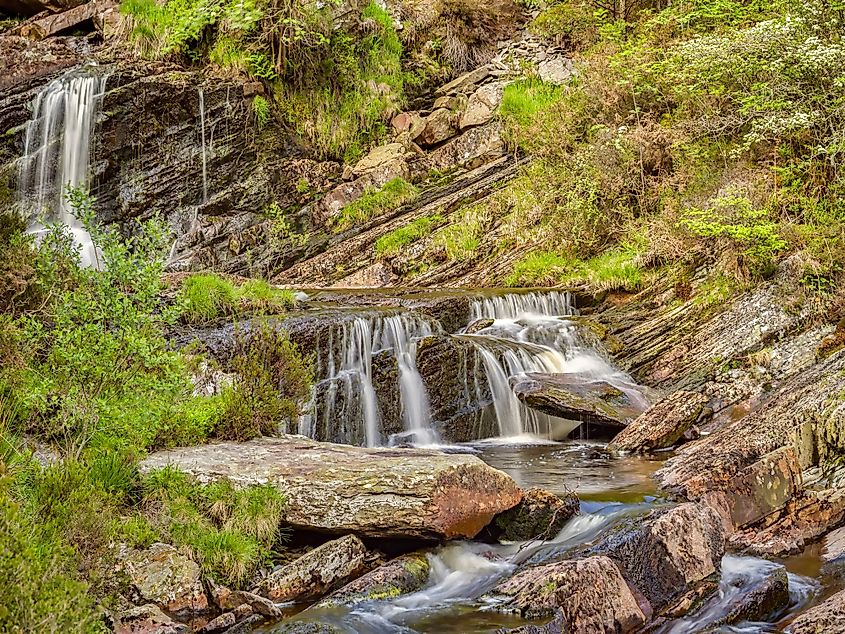
Lake Vyrnwy was created at the head of the River Vyrnwy when the area was flooded by the various streams flowing from the Snowdonia region and the nearby mountains. Initially, the river was sourced from the streams and rivers flowing from the surrounding valleys and streams. Today, the River Vyrnwy flows from the base of the reservoir for about 64 kilometers before joining the River Severn in Melverley, Shropshire. The River Severn eventually flows into the Bristol Channel. Lake Vyrnwy receives water from over 300 rivers, waterfalls, and brooks, with most streams flowing from the nearby hillsides and mountains. The rivers and brooks, named after the source mountains and hills, include Eunant, Afon Hirddu, Afon Eiddew, Afon Cedig, Afon Y Dolau Gwynionew, and Afon Naedroedd. The lake forms a small hamlet known as Rhiwargor on the northern edge where Afon Naedroedd and Afon Eiddew converge. The reservoir is surrounded by Lake Vyrnwy Nature Reserve and Estate, an important nature reserve for habitats and wildlife. The lake region experiences a temperate maritime climate common in North Wales. The climate is characterized by warm summers and cool winters, with a mean annual high of 11.2 degrees Celsius and a low of 5.3 degrees Celsius.
Construction History
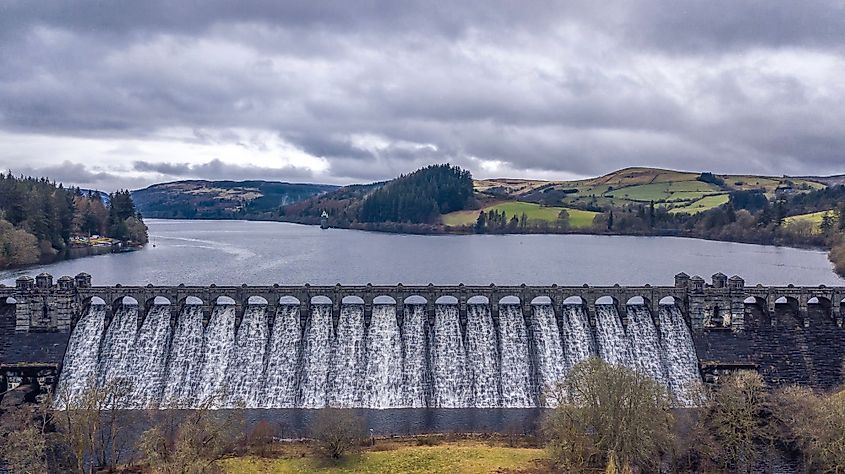
The reservoir’s construction was conceived in the mid-1800s, when George Deacon - the English civil engineer, was asked to prepare a plan for the reservoir to be presented to Parliament for approval. The Vyrnwy Valley was selected as the appropriate site for the dam’s construction because of its topography, source (River Vyrnwy), and size. After the plan’s approval, Thomas Hawksley, a leading 19th-century water engineer, was selected as the project’s chief engineer. The dam’s construction began in 1881 and was completed seven years later in 1888, becoming the first stone dam in the UK. The aqueducts and pipelines that carry water to Liverpool were constructed between 1881 and 1892. The first village of Llanwddyn was buried under the floods, and the people relocated northwest of the lake. A stone memorial was erected on the dam’s eastern end in memory of the 44 people who died during the construction.
Water Supply History
Lake Vyrnwy began supplying water to Liverpool in the late 19th century. The aqueduct that carried the water over 109 kilometers originally comprised two pipelines. The pipelines cut across the valley and are buried underground in most parts, with the only visible features including balancing reservoirs, Cileos valve house, and air valves. The construction of the third pipeline began in 1926, with the first section completed in 1938. The 4th pipeline was laid in 1846, increasing the aqueduct’s capacity to 227,000 cubic meters per day. The refurbishment of the Vyrnwy Large Diameter Trunk Main began in 2013 and was to be completed in 2020.
Conservation
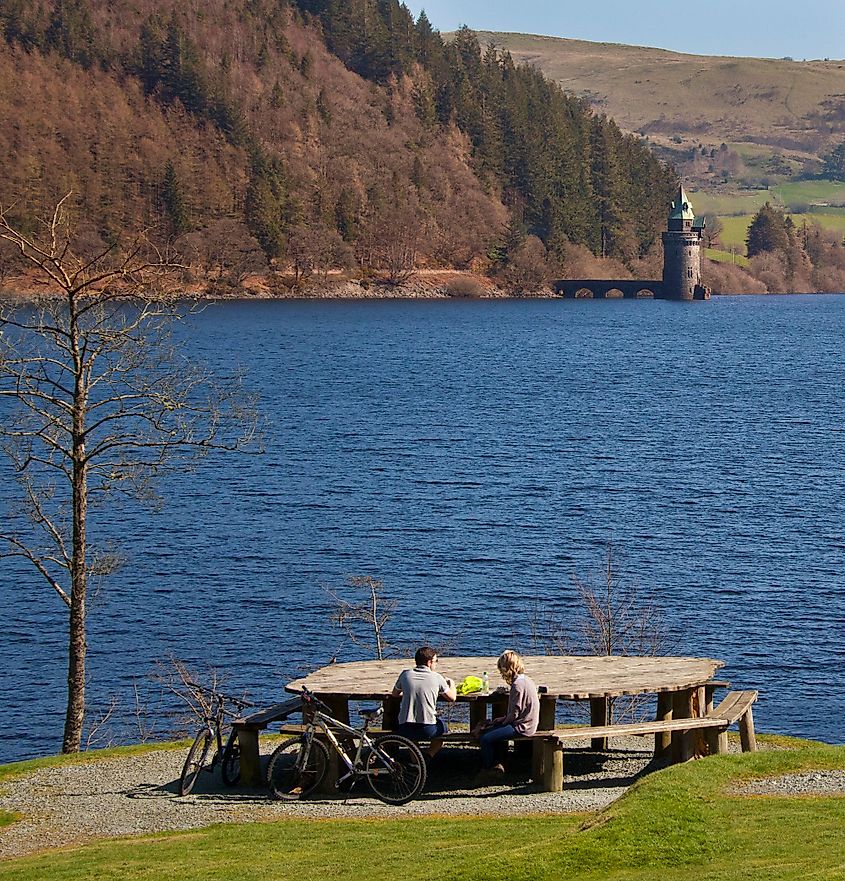
The lake region is designated a nature reserve and managed jointly by Hafren Dyfrdwy and the Royal Society for Protection of Birds. Several rare bird species are hosted in the bird shelters around the lake. About 90 different bird species breed on the reserve, including the Eurasian siskin, common redstart, wood warbler, pied flycatcher, and peregrine falcon. Besides the birds, there are six bat species, including long-eared bat and pipistrelle. Butterflies and dragonflies are also common around the lake region. About 400,000 trout were introduced into the lake in 1889, shortly after its completion, from Loch Laven located in Scotland. The lake once hosted the UK’s tallest tree, a Douglas fir that stood 63.8 meters tall. The 124-year-old tree was felled in 2011.
